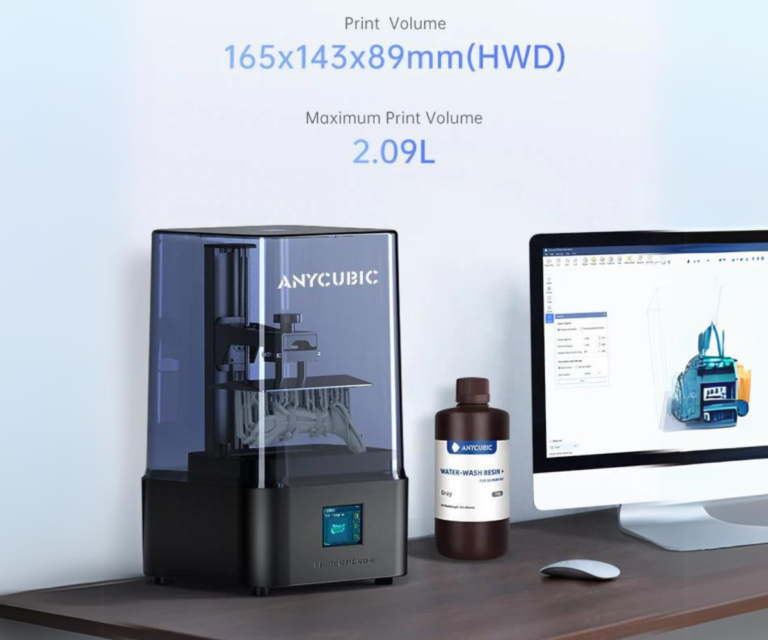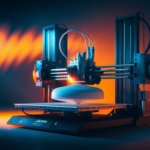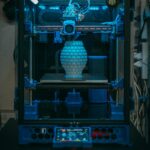Creality Ender-3 V3 KE: In-Depth Review
The Creality Ender-3 V3 KE is the latest iteration of the highly successful Ender series, and it brings with it several new features that aim to elevate its performance while maintaining the budget-friendly ethos that Creality is known for. Let’s dive into the specifics.
Smart Creality OS; 500mm/s Max Printing Speed; X-axis Linear Rail
Up to 500mm/s speed with 8000mm/s² acceleration
“Sprite” Direct Extruder enables 300℃ printing and smooth feeding of various filaments
X-axis Linear Rail, Ultra-smooth Motion
3 Ways of Printing, Phone Control, WiFi, and USB Drive
Quick Assembly| Self-test with One Tap| Auto Filament Loading
Handles Hyper PLA, PETG, ABS, TPU(95A) and ASA filaments.
Key Features
- CoreXY Structure
- One of the major upgrades in the Ender-3 V3 KE is its shift to a CoreXY design. This is a significant step up from the traditional Cartesian design in terms of print speed and stability. The CoreXY mechanism allows the printer to reduce vibrations and improve print quality at higher speeds.
- 32-Bit Silent Motherboard
- Creality has equipped the V3 KE with a 32-bit silent motherboard. This greatly reduces the noise output during operation, making it a quieter printer compared to older models. For makers working in home environments, this can be a big plus.
- Upgraded Direct Drive Extruder
- The direct drive extruder on the Ender-3 V3 KE is optimized for smoother and more reliable extrusion, especially when printing with flexible filaments like TPU. This gives it an edge over the older Bowden setups commonly found in entry-level printers.
- Auto Bed Leveling (ABL)
- The inclusion of auto bed leveling (ABL) is a significant quality-of-life improvement. ABL ensures that the first layer is consistently level across the build plate, leading to fewer failed prints and reducing the time spent manually adjusting the bed.
- Larger Build Volume
- The build volume remains impressive at 220 x 220 x 250 mm, offering enough space for most hobbyist projects while still fitting on a typical desk. The ability to print moderately large objects without a bulky footprint is a key selling point.
- Dual Z-Axis Design
- The dual Z-axis design improves the overall stability of the print bed, reducing wobble and ensuring precise vertical movements. This upgrade is particularly noticeable when printing tall objects, as the layers stay aligned with better accuracy.
- Resume Print Functionality
- Like its predecessors, the V3 KE supports resume print functionality. In case of power outages or filament runouts, the printer can resume from where it left off, saving both time and filament.
- Touchscreen Interface
- A 4.3-inch touchscreen adds a more modern interface, making it easier to navigate the printer’s settings. This is an improvement from the older knob-controlled menus, offering a more intuitive user experience.
Performance and Print Quality
The CoreXY structure, combined with the upgraded extruder and dual Z-axis, greatly enhances the precision of prints. At higher speeds, the printer maintains impressive accuracy, making it well-suited for both rapid prototyping and detailed models. The direct drive extruder especially shines when working with filaments like TPU, which require more precise extrusion control. Traditional PLA and ABS prints come out crisp and smooth with excellent layer adhesion.
The printer operates at speeds up to 250mm/s, and thanks to the CoreXY system, this speed doesn’t come at the cost of quality. It’s particularly efficient for printing larger objects without introducing ringing or ghosting artifacts.
Assembly and Setup
Like other Creality printers, the Ender-3 V3 KE arrives semi-assembled. While it requires some assembly, Creality provides clear instructions, and the process is straightforward, typically taking 1–2 hours. For beginners, this is an excellent way to become familiar with the printer’s components.
The auto bed leveling drastically reduces the learning curve, ensuring that even novices can achieve a level bed without the hassle of manual calibration. This makes the printer much more user-friendly compared to earlier Ender models.
Pros
- CoreXY structure for improved speed and accuracy
- Direct drive extruder for versatile filament compatibility
- Auto bed leveling for hassle-free setup
- 32-bit silent motherboard for quieter operation
- Dual Z-axis for enhanced stability on tall prints
- Touchscreen interface for easier operation
- Resume print functionality to recover from interruptions
Cons
- While the CoreXY design improves performance, it makes the printer slightly more complex to assemble and maintain compared to simpler Cartesian setups.
- The build plate is not significantly larger than previous models, which may limit projects that require even bigger dimensions.
- Some users report that the touchscreen can be slightly less responsive than desired, though this doesn’t impact the overall functionality much.
Comparison to Competitors
Compared to its peers in the budget and mid-range 3D printer market, the Ender-3 V3 KE offers exceptional value. The Prusa Mini+ is a close competitor in terms of print quality but comes at a higher price, while the Artillery Sidewinder X2 matches the build volume but lacks the CoreXY structure, making the Ender-3 V3 KE the better choice for those prioritizing speed and precision.
Final Verdict
The Creality Ender-3 V3 KE is an excellent choice for hobbyists and makers looking to level up their 3D printing experience. Its combination of the CoreXY structure, direct drive extruder, and auto bed leveling makes it a strong contender in the sub-$400 range. Whether you’re printing detailed models or large prototypes, the V3 KE delivers the versatility, speed, and precision required to handle a wide range of projects.
For users seeking an affordable yet powerful 3D printer, the Creality Ender-3 V3 KE stands out as one of the top choices in its class.








